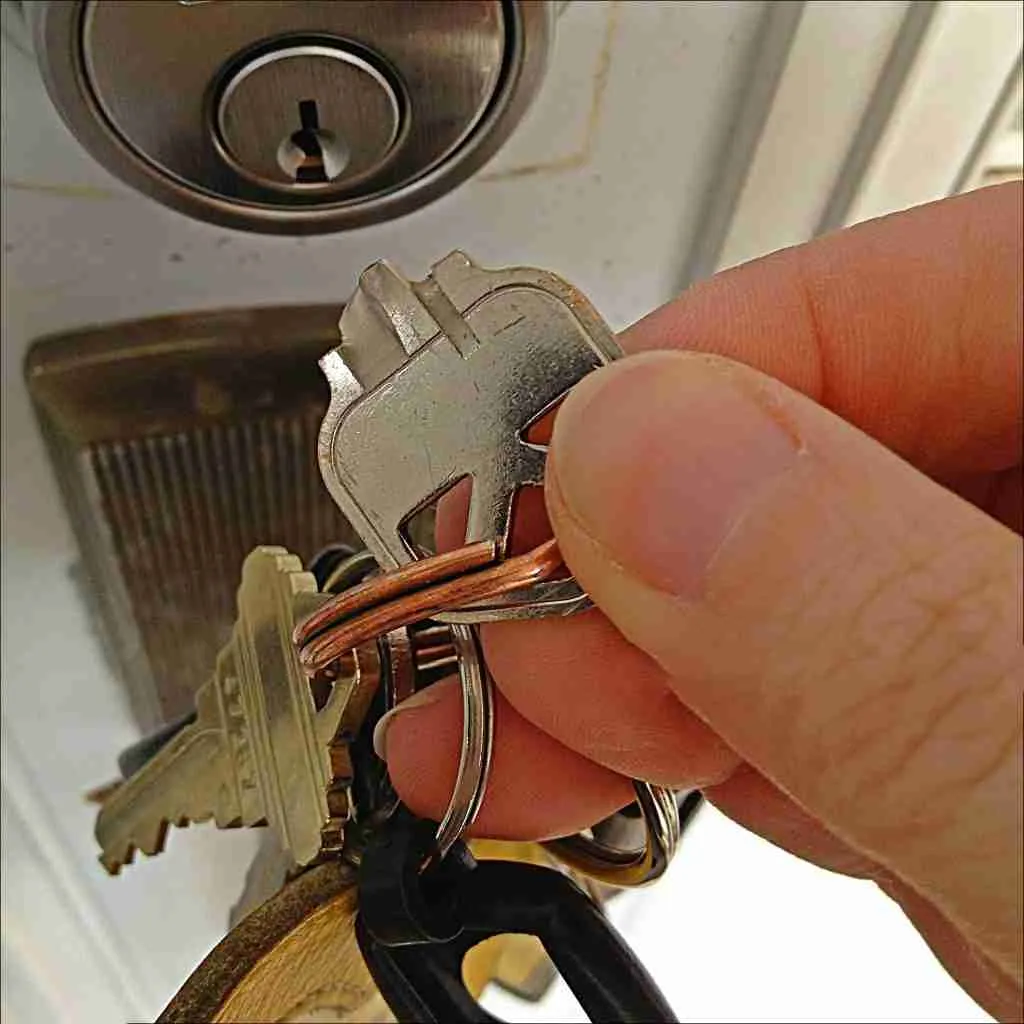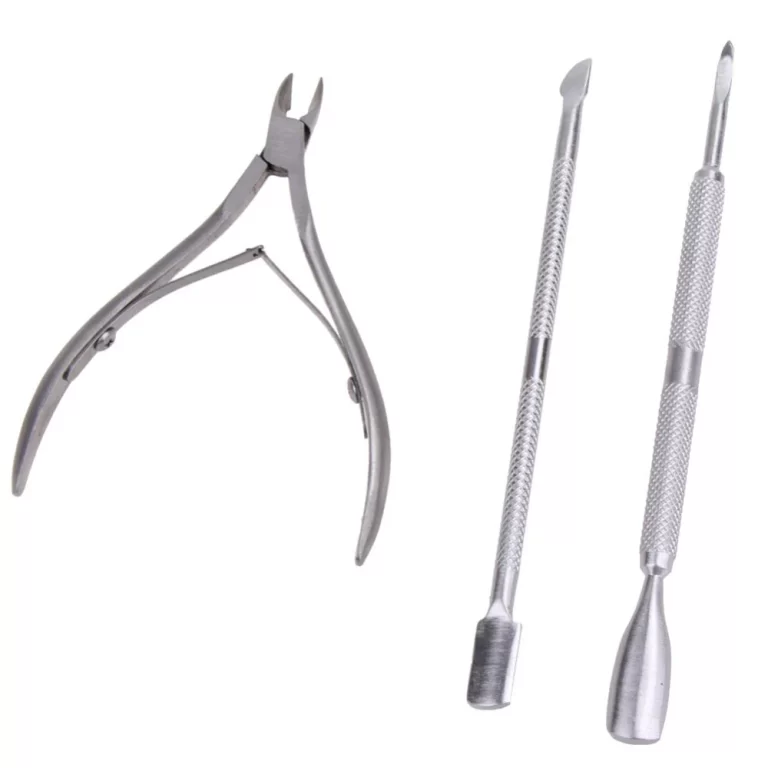
Handle Broken Key Emergencies: DIY Lock Fixes for Home and Beyond
Recognizing the Problem: How Broken Keys Affect Your Locks
When keys break inside locks, it brings more than just a hassle. It affects how your lock functions and might damage it. Keys can snap due to wear or a sudden twist. Leaving the broken part inside can harm the lock’s internals. How to get a broken key out of a lock without tools? Broken keys might prevent you from locking doors properly, posing a security risk. It’s key to understand the impact to fix the issue effectively.
The Toolbox Essentials: What You Might Already Have at Home
Dealing with a broken key can be intimidating, but often, the tools you need are already in your home.How to get a broken key out of a lock without tools? Here’s a quick rundown of items that could help you extract a broken key from a lock:
- Needle-nose pliers: These can grab and pull out pieces of the key sticking out from the lock.
- Paperclips or Safety pins: Straighten these out to prod and push key fragments.
- Bobby pins or Hairpins: Similar to paperclips, they can be bent into different shapes for key extraction.
- Tweezers: If there’s a piece of the key visible, tweezers might be able to pull it out.
- Magnets: If your key is magnetic, a strong magnet could attract the pieces for removal.
- Swiss army knife: This often includes tools like tweezers or small pliers useful for many tasks, including this one.
Before you start the extraction process, ensure you’ve got a good light source. This helps you see inside the lock clearly. If you have lubricant like graphite spray, apply it to ease the extraction process. Remember to proceed with care, so you don’t push the broken part further into the lock mechanism.

Step-by-Step Guide to Removing Broken Keys
Removing a broken key from a lock may seem daunting, but it’s a task you can often handle on your own. How to get a broken key out of a lock without tools?Follow these steps carefully for a successful extraction:
- Ensure the Lock Is Lubricated: Apply a graphite spray lubricant or dry lubricant to the keyhole. This eases removal and minimizes damage to the lock.
- Inspect the Broken Key: Look at how much of the key sticks out. The less that’s visible, the trickier it will be.
- Use Tools at Hand: If a bit of the key is showing, use pliers or tweezers to gently pull it out. Avoid pushing it deeper.
- Create Space and Visibility: Make sure you have enough light to see the keyway clearly. This helps in aligning your tools.
- Straighten a Paperclip or Pin: If no tools are available, straighten a clip or pin. Gently probe and try to hook the key piece.
- Be Patient and Persistent: Take your time. If the key doesn’t come out easily, don’t force it. Repeated gentle attempts are better.
- Take Care Not to Push the Key In: As you work, be careful not to apply too much pressure. This can push the key further in and complicate the situation.
- If in Doubt, Stop: If you’re not making progress, it might be best to call a locksmith. It’s better to avoid causing further damage.
By following these steps, there’s a good chance you can get the broken key out of the lock. Remember, patience and the right approach are your best tools here.

When to Use a Key Extractor Tool
When faced with a key stuck in a lock, the key extractor tool can be your best bet. It’s designed for such situations and offers a safe way to remove broken pieces without damaging the lock. This precision instrument can grip and pull out the key part with its hook or spiral design. But knowing when to use it is crucial. Here’s a brief on proper use:
- Visible Key Part: If a piece of the key juts out, try pliers first. Use an extractor if pliers fail.
- Deeply Stuck Key: When the key fragment lies deep within the lock, the key extractor becomes more effective.
- No Tools Work: After you’ve tried household items with no luck, the extractor tool should be your next step.
- Risk of Damage: If using other tools might push the key in or harm the lock, opt for a key extractor.
Remember, the key extractor is a specialized tool. If you’re not familiar with it or if it doesn’t work, it might be time to call a professional locksmith. They are trained to handle these tools with precision and care.
Crafty Solutions: DIY Key Extraction Techniques
When you’re faced with a broken key in a lock, don’t despair. Try these DIY solutions before calling for help. Here’s how you can attempt to get the broken key out:
- Lubricate the Lock: Start by applying a dry lubricant. It eases the process.
- Assess the Broken Key: See if any part of the key sticks out from the lock.
- Use Household Items: Tweezers or pliers might help if a fragment is visible.
- Get Crafty: A straightened paperclip or safety pin can act as a makeshift tool.
- Be Patient: Gently prod and pull without pushing the broken piece further in.
- Avoid Further Damage: If DIY tries fail, it’s best to seek a professional locksmith.
When none of your household items do the trick, or if you’re worried about damaging the lock, it’s time to consider other methods. Always proceed with caution to avoid complicating the issue.

Professional Intervention: When to Call a Locksmith
Sometimes, DIY methods fail to solve broken key issues. It’s then wise to call a locksmith. They are trained to handle such problems without harming your lock. Wondering when it’s time to call one? Here are some signs:
- You’ve Tried Everything: If all other methods have failed, it’s best to get professional help.
- The Key is Deeply Stuck: If the key is broken off deep inside the lock, a locksmith has the right tools to extract it safely.
- You Lack Tools: If you don’t have any extraction tools or the right ones, a locksmith can help.
- Time is of the Essence: If you’re in a hurry and the key is not coming out, a locksmith can quickly resolve the issue.
- Lock Is Valuable or Complex: If your lock is expensive or has a complex mechanism, a locksmith will know how to handle it properly.
- You Want to Avoid Damage: To prevent further damage to your lock, a locksmith can perform the extraction expertly.
- You Need a New Key or Lock: After extraction, a locksmith can also provide a new key or replace the lock if needed.
A locksmith’s service will cost money, but it often saves time and prevents lock damage. Their skills can give you peace of mind, knowing the job is done right.
Preventative Measures to Avoid Broken Keys in the Future
Preventing keys from breaking in locks saves future troubles. Here are some tips to avoid such situations:
- Regularly Lubricate Locks: Add lubrication to locks every few months. Choose silicone-based products to keep the moving parts smooth.
- Inspect Keys for Damage: Check your keys often for bends or wear. If they show signs of damage, get a spare made right away.
- Don’t Force the Key: Never force the key to turn. If it’s not turning easily, the lock might need lubrication or there could be a deeper issue.
- Use the Right Key: Always make sure you’re using the correct key. Forcing the wrong key can damage both the key and lock.
- Be Mindful with Spare Keys: Keep spares in a safe place. Too much weight on keychains can cause stress on keys.
- Consider Key Quality: Invest in high-quality keys. They resist breaking better than cheaper, softer metals.
- Maintain Clean Locks: Keep locks clean from dust and debris. Use compressed air to blow out any particles.
By following these steps, you’ll lessen the chance of key breaks. You’ll ensure your locks work well for years to come.

The Cost Factor: Understanding Locksmith Services and DIY Savings
When dealing with a broken key in a lock, cost is a major consideration. Many people choose DIY methods to save money. Locksmith services can seem costly, but they offer expertise and quick fixes. Assess the situation and the tools at hand before deciding on DIY or professional help.
- DIY Savings: Using tools you have at home can save dollars. Needle-nose pliers, magnets, and paperclips are cost-effective options. But, they may not always work, especially if the key is deep in the lock.
- Locksmith Costs: A professional locksmith fee includes the call-out charge, labor, and replacement parts. Prices vary by location and lock type. It might seem high, but it prevents lock damage.
- Risk vs. Reward: DIY might sound cheaper but think about the risks. Without the right skills, you could damage the lock further. This leads to more expenses in the long run.
- Insurance: Check if your home insurance covers locksmith services. Some policies include lock damage and key replacement.
- Time Factor: Consider the value of your time. Locksmiths can solve the problem quickly. DIY attempts can be time-consuming and frustrating.
In summary, weigh the potential savings of a DIY approach against the cost and convenience of hiring a locksmith. Consider the complexity of the lock, your confidence in using household tools, and the potential for additional damage. Sometimes, paying for professional services can be the most cost-effective solution in the long term.

